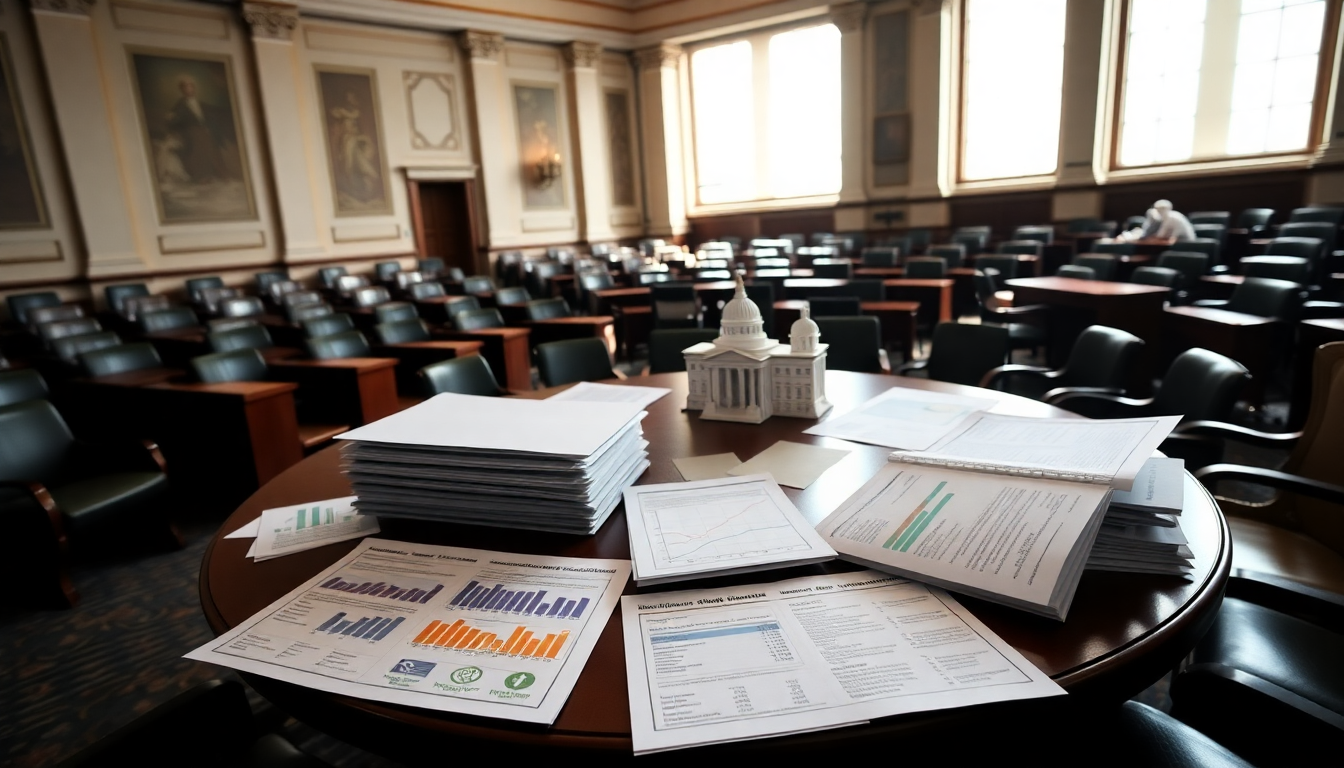Table of Contents
The recent passage of President Donald Trump’s ambitious tax cut and spending bill marks a huge moment in American legislative history. As the Republican-controlled Senate pushes forward with this controversial legislation, the implications for various sectors of society and the economy are becoming increasingly clear. The bill, designed to fulfill Trump’s long-standing goals, promises significant changes in areas like military spending, healthcare, and tax incentives. But what does this mean for the everyday American? Understanding the nuances of this bill is crucial as its effects could echo throughout the nation’s financial landscape.
Overview of the Legislation
So, what exactly is the “One Big Beautiful Bill Act”? Well, it’s a hefty 940-page document that emerged from intense negotiations in the Senate. With a narrow passage of 51 to 49, the bill is facing strong opposition from Democrats, who are raising alarms about its potential repercussions. At the heart of the legislation is a whopping $150 billion increase in military funding, which has been a major focus for the Trump administration. However, this financial boost comes at a price, as it proposes significant cuts to Medicare and Clean Energy funding to accommodate these expenditures.
This bill has sparked heated debate not only within the Senate but also among the public. The urgency to pass this legislation, particularly before the July 4 deadline, highlights the pressure Republican leaders feel to deliver on Trump’s promises. But as this bill moves forward, it’s vital to dig deeper into what it really entails and how it aligns with the needs of everyday Americans.
Contentious Provisions and Their Effects
Diving deeper into the bill reveals provisions that could dramatically reshape healthcare and social services. Proposed cuts to Medicaid could reach nearly a trillion dollars, raising serious concerns about healthcare access, especially for rural hospitals and the millions who rely on these services. Analysts warn that around 8.6 million Americans might find themselves without adequate healthcare coverage if these cuts go through. Isn’t it alarming to think about the long-term effects on healthcare services in rural communities and the overall well-being of the population?
Moreover, this bill seeks to roll back many of the tax incentives for renewable energy initiatives that were established during the previous administration. This could seriously hinder progress in the renewable sector, which has been gaining traction in recent years. Critics argue that such measures favor traditional industries while overlooking the importance of innovation and sustainability in today’s economy.
Public Sentiment and Political Ramifications
Public reaction to this bill has been largely negative across different demographic groups, with extensive polling showing widespread dissatisfaction. Notable figures, including billionaire entrepreneur Elon Musk, have voiced their concerns, pointing out the potential job losses and strategic harm this bill could inflict on the American economy. Many critics feel that the bill may only serve the wealthiest members of society while leaving the middle and lower classes behind. Does this sound fair to you?
In the political arena, the division among Republicans over Medicaid cuts illustrates the internal conflicts facing the party. With only a slim margin for error in the House of Representatives, the future of this legislation hangs in the balance. As discussions continue, calls for transparency regarding the bill’s content are growing louder, with Democratic leaders advocating for a thorough examination of its implications before any final vote.
Conclusion: Navigating the Future
The events unfolding around Trump’s tax and spending bill highlight the complexity of governance and its direct impact on millions of Americans. As the Senate gears up for further debates and the House prepares to weigh in, the stakes couldn’t be higher. The potential consequences of this legislation—ranging from healthcare access to economic stability—will shape the American landscape for years to come. It’s crucial for observers and citizens alike to stay informed and engaged as this important legislative process unfolds, knowing that the decisions made today will resonate for generations.


